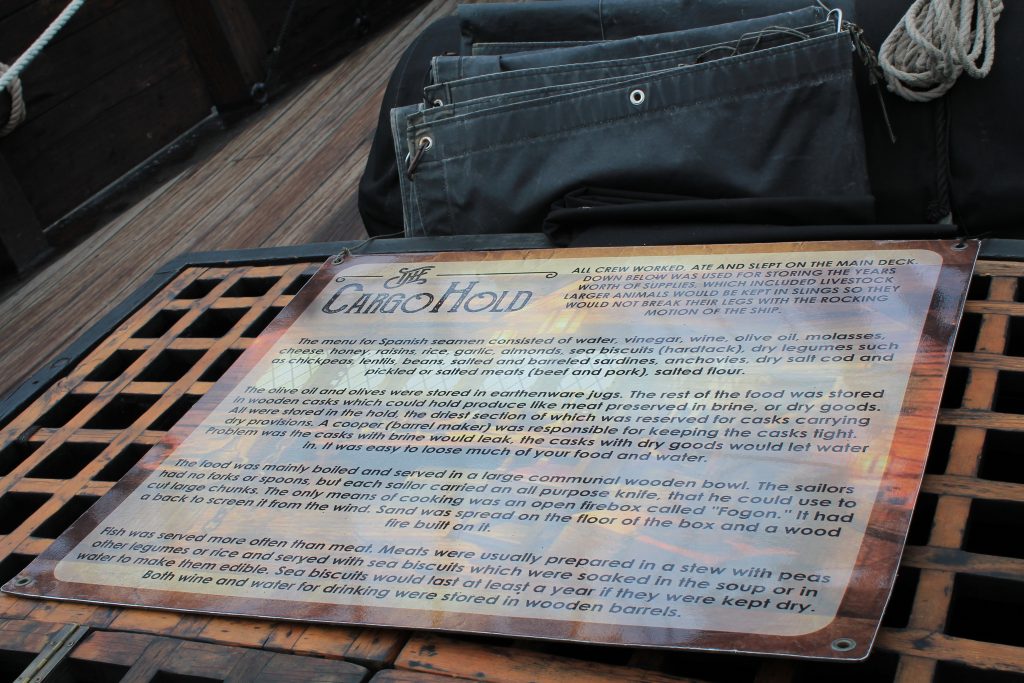

These sets include the "Great Moments in History" (kit 72212) and the "Columbus Discovers America Diorama Niña, Pinta, Santa María" with a seascape, acrylic paints, and paintbrush (kit 70860). Lindberg has issued it on and off since then, sometimes along with the Niña and Pinta kits.

Life-Like produced the kit from 1972 until they folded in 1978, when Lindberg acquired the molds. This one is a reissue of Pyro's Santa María kit #171, which first appeared in the 1950s. They build quickly into pleasing but somewhat toylike models. Unfortunately the surface detailing throughout these kits is quite heavy, especially the raised wood grain. Some smaller parts such as the launch and lombard cannons are rather nicely done as well (although the gun mounts shouldn't be wheeled). The billowing sails are molded integrally with the spars, but they look surprisingly good. Niña ("Little Girl") is depicted as lateen rigged rather than square rigged as she appeared during her transatlantic trip under Columbus (although the rig is correct for the first leg of the voyage). Masts, though simplified, are basically accurate.

The bows at the foredecks should probably rake upwards a little more, but they aren't too far off published sources. The hulls measure 5 3/4 inches in length, scaling the ships at about 1/150.ĭespite their simplicity, the models appear generally to match what little is known about 15th Century caravels. They were later issued by Life-Like, then by Lindberg, and most recently by Round2 under the defunct Lindberg logo. Trade between the two worlds also included bring diseases.Numbers 11 & 12 of Pyro's "Antique Ship" series, the Niña and Pinta retailed for the princely sum of 60 cents each when they were first issued back in 1966! Designed for younger modelers, these sailing ships featured simple, fast construction and a minimum of parts. The Ships Store sells a few items such as post cards and children’s learning books. The ships are steered as it was 1492, with a rudder and tiller.įor a moment, Italians re-flagged the ship. The ships are docked near Harrah’s and the Biloxi Yacht Club. The “cabin boy” was the only person allowed below deck. Below deck was where livestock and food were keep. The Nina & Pinta replicas provide a great appreciation for what life was like for sailors, as all slept on deck. The men were killed by natives before Columbus returned to pick them up. The Santa Maria was made into a hut and Columbus was forced to leave over 30 men from the Santa Maria. The Captain decided to take a nap and told a less qualified person to “just follow the Nina & Pinta.” The Santa Maria ran into a reef following the Nina & Pinta and had to scrapped. The Santa Maria’s draft was 12′ feet compared to the Nina & Pinta, which had a draft of 7′. With Joseph Ventura, President of the GCIAS. Using the stars he knew the ships on a straight line for 33 days.įirst Mate “Dee Zee” was a history teacher in Wisconsin who joined the Foundation to sail the ships and inform the public. After 1491 and the Treaty of Granada with the Muslim Moors was signed, funds were available for the exploration.Ĭolumbus was a great navigator and knew the winds blew east to west near the Azores to the Caribbean and west to east to the north. Hence the words in the Marine Hymn: “To the shores of Tripoli.”Ĭolumbus was motivated to find a safer trade route to the Far East. The pirates of the Barbary Coast believed the non-Muslims had to pay a “tribute.” This belief lasted for over 400 years until 1804 and the Barbary Coast Wars. In 1476, Columbus was on a ship that was sunk by Barbary Coast pirates of Africa, but survived by holding on the a board and swimming two miles to land outside of Portugal. In 1450 the Ottoman Turks closed off the land trade route to the Far East. “Dee Zee” talk educated the group on what to look for as it toured the ships, which also had staff on board to show details. Prior to the tour, Dee Zee – a former history teacher and the ships’ historian, spent fifteen minutes giving a detailed talk on the history of Christopher Columbus and the Nina, Pinta, and Santa Maria. The ships are in Biloxi for a few weeks as they tour the Western Hemisphere. GCIACS President Joseph Ventura organized a wonderful tour on a beautiful day for twenty members of the GCIAS. Members of the Gulf Coast Italian American Cultural Society (GCIACS) toured the Nina & Pinta in Biloxi Mississippi


 0 kommentar(er)
0 kommentar(er)
